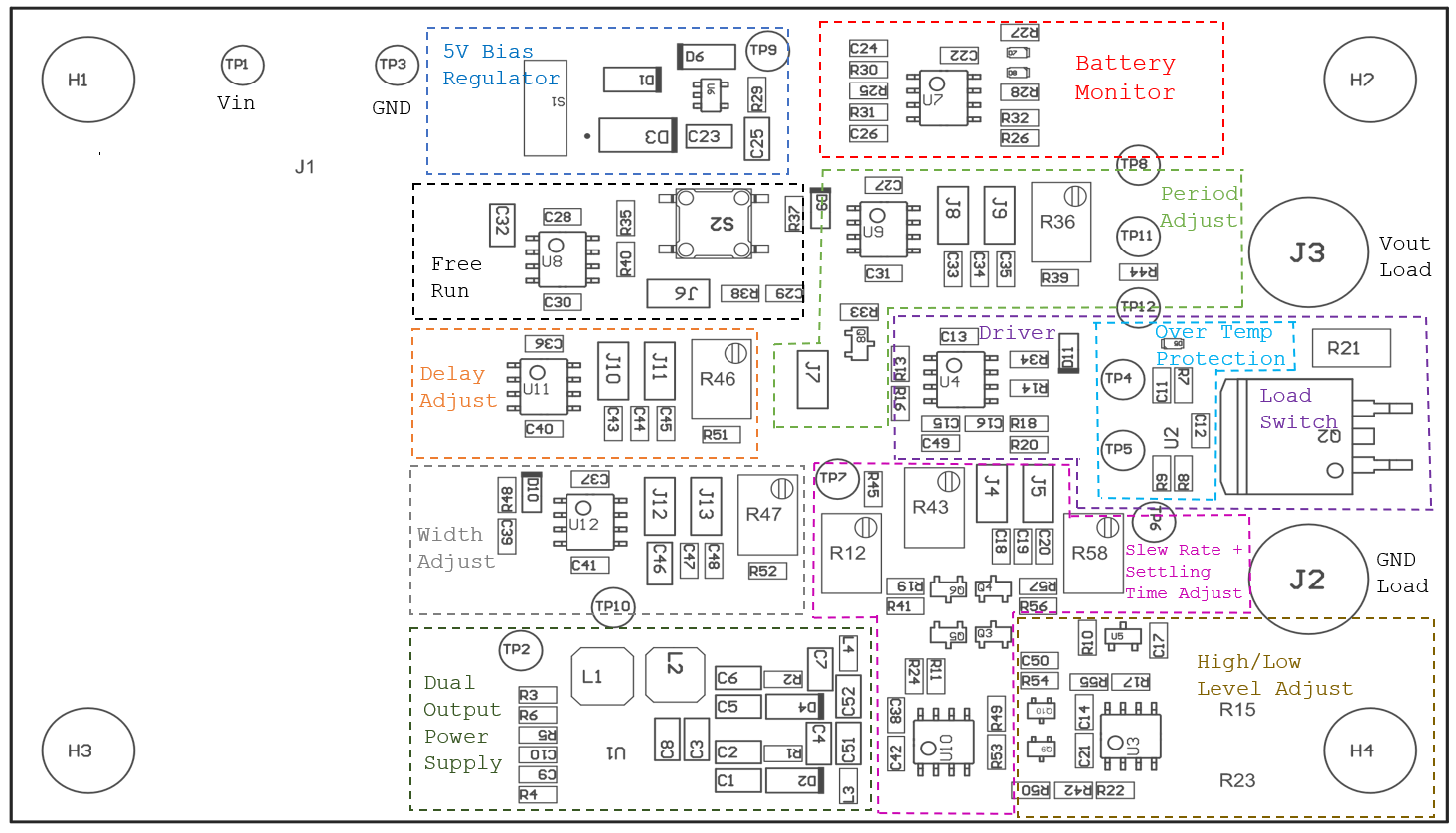TIDT293 October 2022
2.1 Board Contents
 Figure 2-1 Board Subcircuits
Figure 2-1 Board SubcircuitsThe board consists of the following subcircuits:
- A dual output power supply to provide power for the pulse shaping and driver circuits
- A 5-V bias regulator to provide power for the timing circuits
- A battery monitor with status LEDs to indicate good or low battery
- An overtemperature protection circuit that provides thermal shutdown
- A driver and load switch circuit for the load transient
- A pulse shaping circuit that adjusts the low and high level of the load transient as well as the slew rate and settling time
- Timing circuits that set the period, delay, and pulse width adjustments